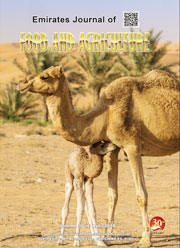Optimizing the making of modified plantain flour by the mixed-culture of lactic acid bacteria and yeast
DOI:
https://doi.org/10.9755/ejfa.2023.3181Abstract
Fermentation factors in the making of modified plantain flour must be optimized to obtain optimum conditions that produce the desired characteristics of flour/starch. In this research, we used mix-cultured lactic acid bacteria (LAB) and yeast for plantain fermentation. Response Surface Methodology (RSM) was used to explain the quantitative relationship between input and response variables. The design used is Combine D-optimal. The quantitative independent variables (X) selected were A = culture concentration (lower limit 2%; upper limit 6%) and B = fermentation time (lower limit 8 hours; upper limit 24 hours). Descriptive variables were C = type of plantain (C1 = “tanduk” plantain; C2 = “nangka” plantain) and D = type of culture (D1 = SC; D2 = LAB1 + LAB2; D3 = LAB1 + LAB3; D4 = LAB2 + LAB3; D5 = LAB1 + LAB1 + SC; D6 = LAB1 + LAB3 + SC; D7 = LAB2 + LAB3 + SC). Parameters of flour characteristic analyzed or response (Y) were carboxyl number (Y1), total acid (Y2), swelling number (Y3), pH (Y4), paste clarity (Y5), gelatinization properties: peak (Y6); trough 1 (Y7); breakdown (Y8); final viscosity (Y9); setback(Y10); peak time (Y11); pasting temperature (Y12), water content (Y13), color : *L (Y14); *a(Y15); *b (Y16) and c (Y17). The result showed that a combination of 6% culture concentration and 12.62 hours of fermentation time with a desirability value of 0.66 was the optimum condition with carboxyl value 0.15, total acid 0.47, swelling rate 13.49, peak time 5397.02, breakdown 2259.22, final viscosity 4125.22, setback 98.99, and dL 65.59.
Keywords: modification flour, optimum condition, fermentation
Downloads
Published
How to Cite
Issue
Section
Copyright (c) 2023 Fitri Setiyoningrum, Gunawan Priadi, Fifi Afiati, Dewi Desnilasari, Rima Kumalasari, Riyanti Ekafitri

This work is licensed under a Creative Commons Attribution-NonCommercial 4.0 International License.










 .
. 